The Netherlands AS A CONDUIT OFFSHORE FINANCIAL CENTER
Javier Garcia-Bernardo
The University of Amsterdam
May 23nd, 2017
Javier Garcia-Bernardo, Jan Fichtner, Frank Takes, Eelke Heemskerk
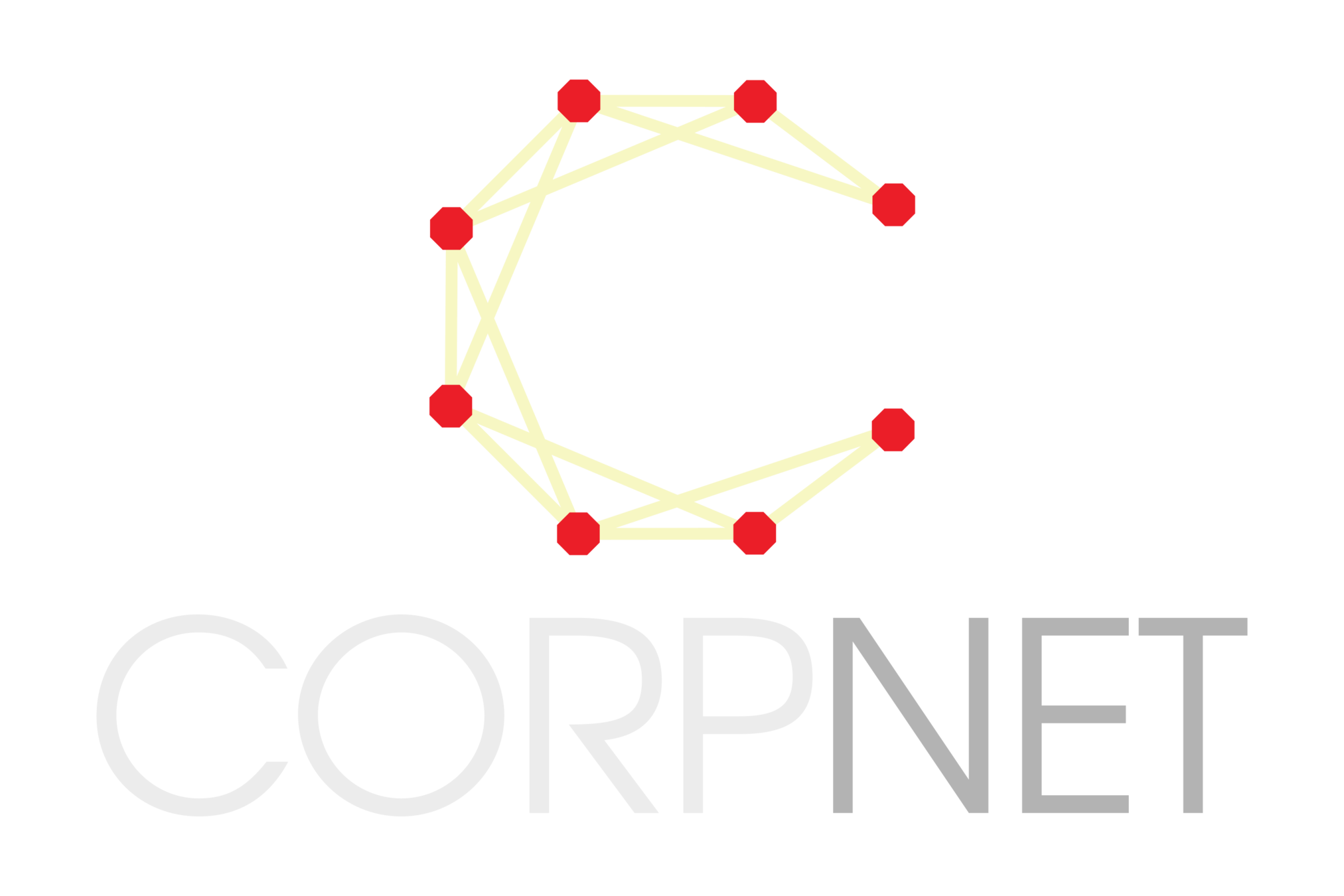

Paper: arxiv.org/abs/1703.03016
THE NETHERLANDS IS IN THE CENTER OF FOREIGN INVESTMENT
Origin of foreign direct investment in Brazil (Brazilian firms controlled by foreign companies)
Weichenrieder, A. J., & Mintz, J. (2006). What Determines the Use of Holding Companies and Ownership Chains?
IT EMERGED IN THE LAST 30 YEARS
Reasons
- Logistic:
- Located in the heart of Europe.
- Outstanding infrastructure.
- Highly educated and multilingual workforce.
- Developed trust and management services.
- Easy to start Special Purpose Entities (SFIs in NL)
- Beneficial tax regime:
- No withholding taxes for interest and royalties.
- No real withholding tax for dividends.
- Participation exemption.
- Large number of tax treaties.
- Advance Tax Rulings (ATR) and Advance Pricing Agreements (APA)
- Investor protection
- Large number of bilateral investment treaties
- Advanced tax ruling system (increase certainty)
(PwC / EY / DELOITTE / KPMG)
- Examples of SFI are:
- Holding companies of (mainly) foreign companies;
- Finance companies that typically extend loans to foreign group companies and are themselves financed mainly from abroad;
- Royalty companies, film and music rights companies that receive royalties mainly from abroad;
- Reinvoicing companies that are mainly invoiced by foreign entities and invoice other foreign entities.
FINANCIAL VEHICLES USED: Special Purpose Entities
(Special Financial Institutions)
Source: De Nederlandsche Bank
Assets of SFIs
Source: De Nederlandsche Bank
Number of SFIs

Source: De Nederlandsche Bank
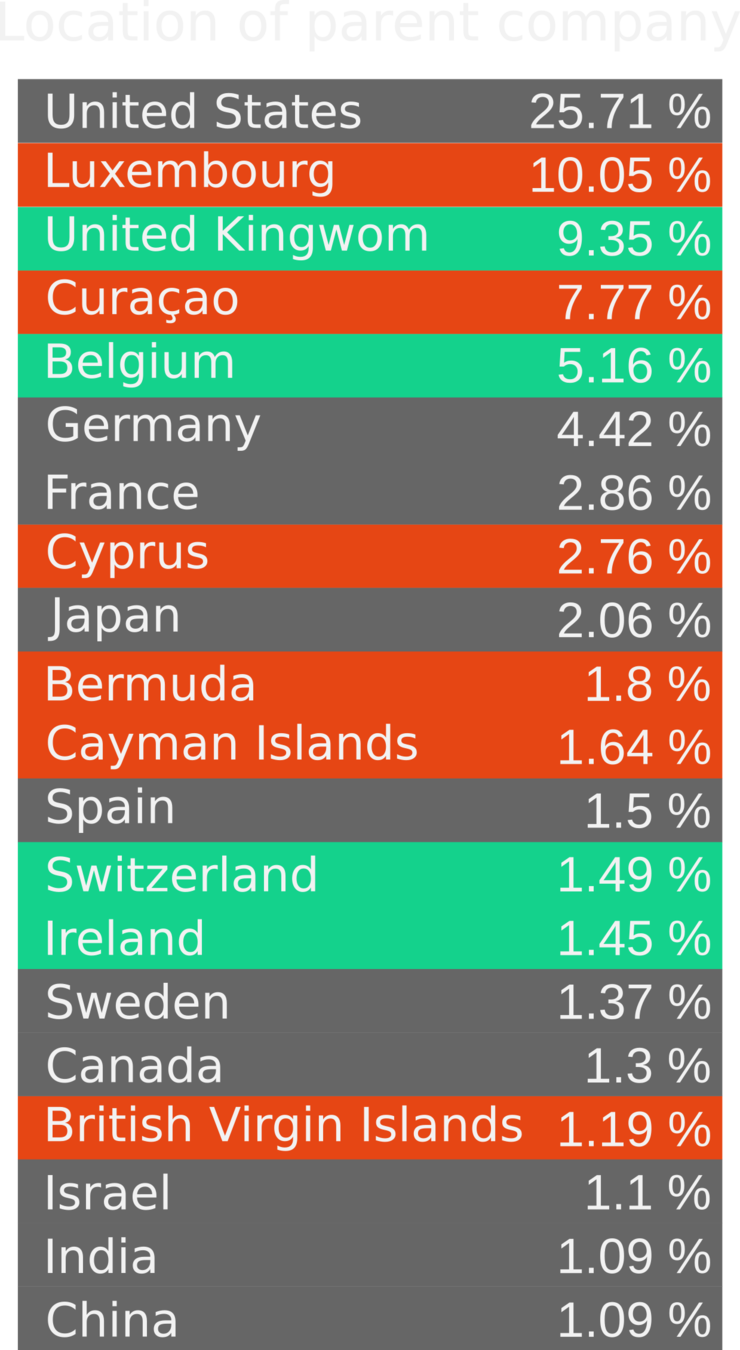
Source: Orbis
- Ownership structures reflect tax strategies:
- Dividends: Parent-subsidiary relationship usually required.
- Royalties/Interests need at some point ownership relationships.
-
The size of the Netherlands indicate a structural role in tax planning:
- Companies such as IKEA, Fiat, Ferrari or Qiagen have moved the headquarters to the Netherlands.
- More common: Use Dutch SFIs. Virtually every EU multinational do it.
- Families control their fortune through foundations in the Netherlands.
WHY WE CARE ABOUT SFIs
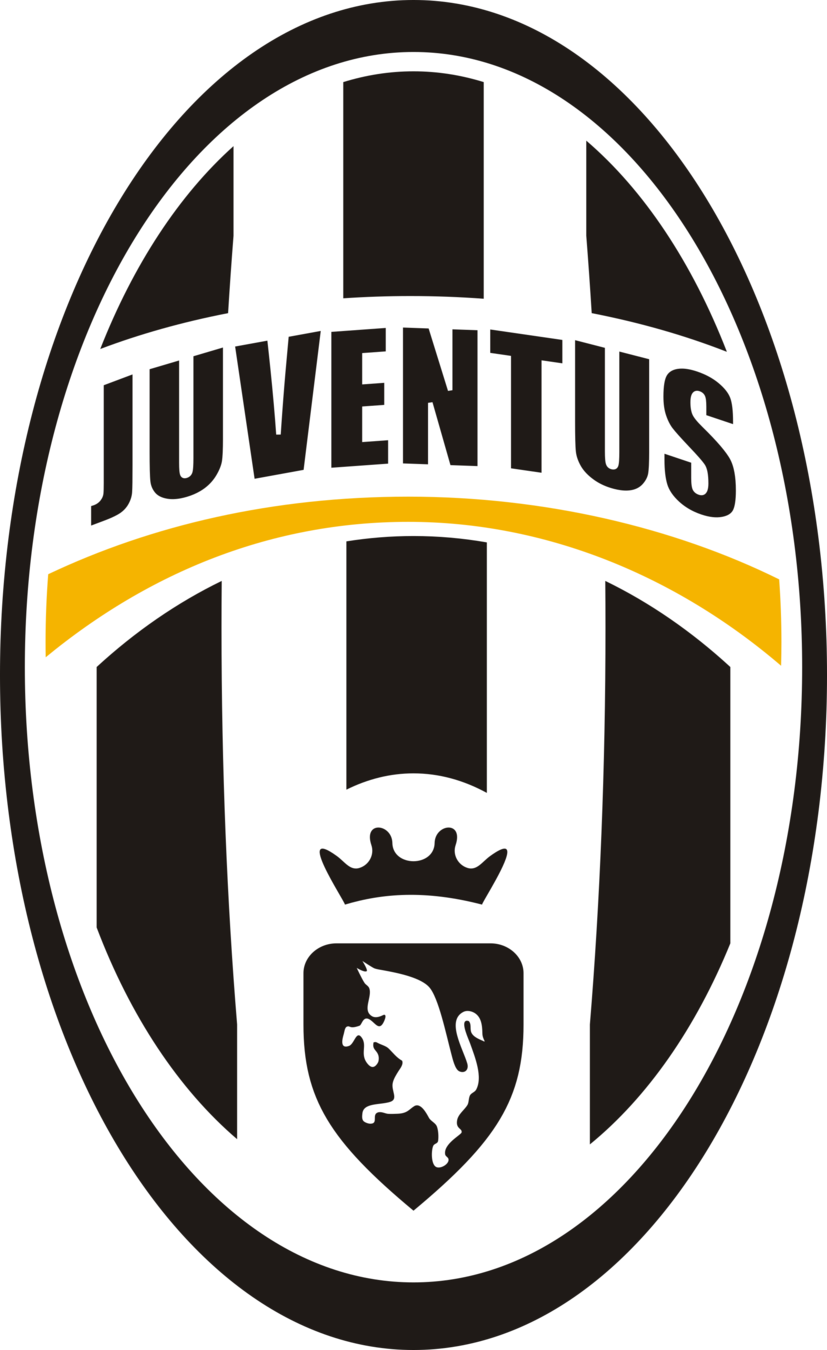





Around €150 billion are lost by tax avoidance -- equivalent to the total annual expenditure of the EU*.
WHY WE CARE ABOUT SFIs
* Fernandez, R., McGauran, K., & Frederik, J. (2013). Avoiding Tax in Times of Austerity. Energias de Portugal (EDP) and the Role of the Netherlands in Tax Avoidance in Europe.
Tax of Holding: 27.8%
Tax of IKEA: 22.5%
our research
We look at which countries are used disproportionally in transnational ownership chains.
ORBIS
- 200 million companies
- 70 million ownership relationships
- 10 million transnational chains











finding 1: sink-OFFshore financial centers


Blue: (Former) Colony/Territory of the United Kingdom
Paradisacal beach in Luxembourg
As of June this year, BVI hosted 430,000 companies: 15 for each of their 28,000 inhabitants. The
finding 1: sink-OFFshore financial centers
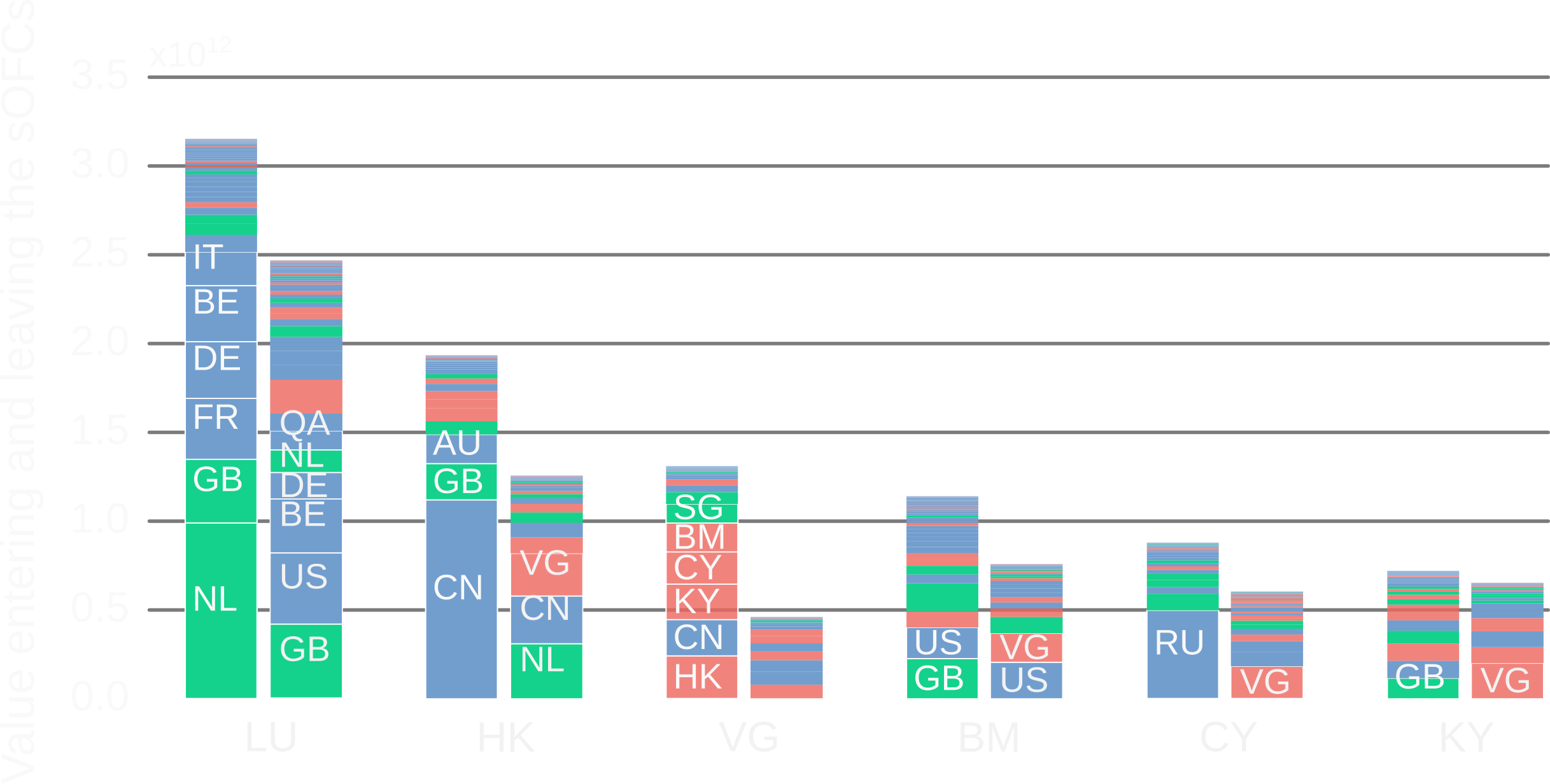

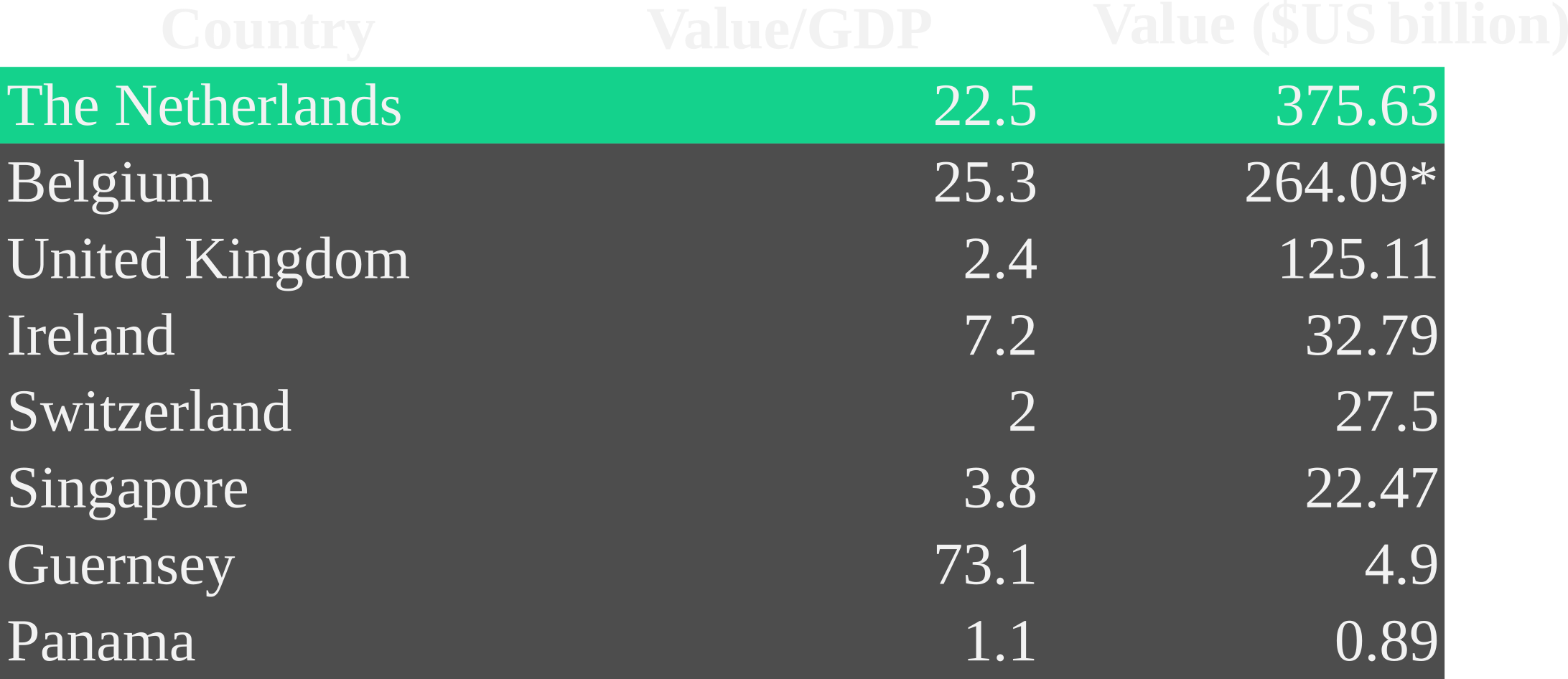
finding 2: conduit-OFFshore financial centers
sink
conduit
other country
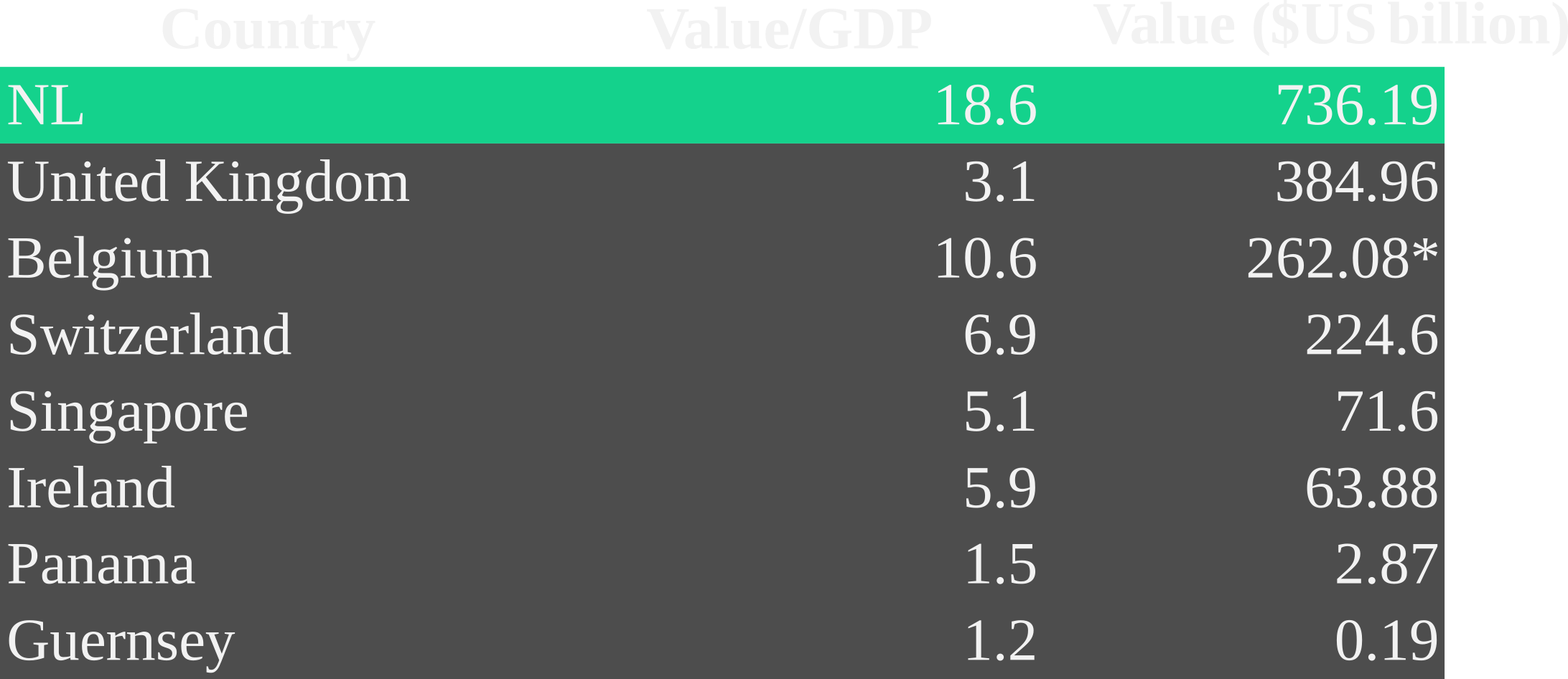

finding 2: conduit-OFFshore financial centers
sink
conduit
some country
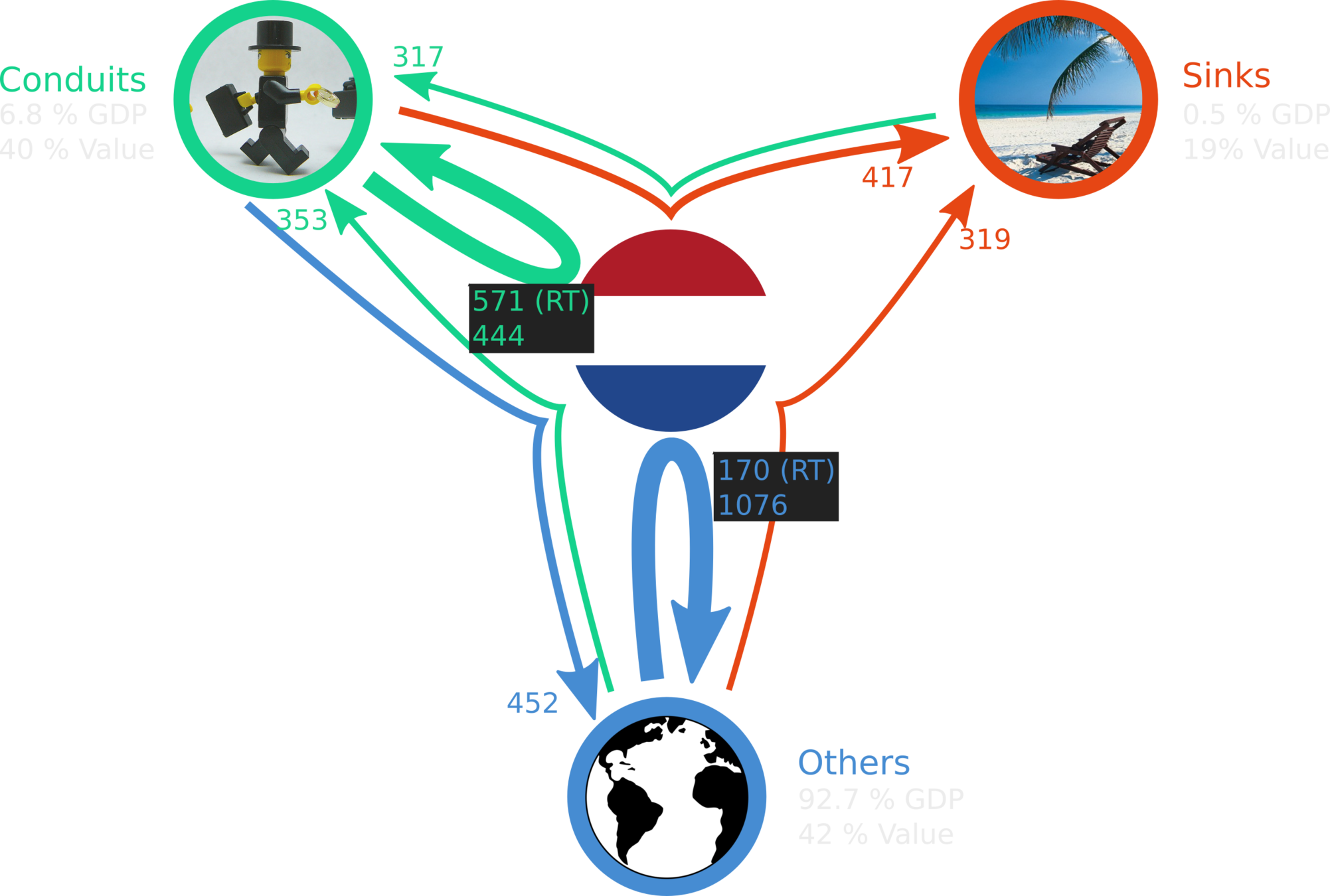
Round-tripping
what do the numbers actually mean?
what do the numbers actually mean?
23% of all the value flowing to a sink-OFC flows through a Dutch SFI
Chains to:
- Luxembourg: 40% go through the Netherlands
- Cyprus: 30% go through the Netherlands
- Malta: 71% go through the Netherlands
- Curaçao: 90% go through the Netherlands
- Lichtenstein: 30% go through the Netherlands

Node:
- Color: Importance as sink (Blue < Yellow < Red)
- Size: Importance as conduit
Arrow:
- Color: Importance relative to GDP
- Size: Importance
conclusions

- Global situation:
- Sink-OFCs are connected to the United Kingdom (except Luxembourg).
- Conduit-OFCs (NL,GB,IE,CH,SG) are on our doorstep:
- They are specialized geographically and sectorally.
- Can be a point of intervention.
- Dutch situation:
- Dutch SFIs are in the middle of 23% of all corporate structures (and growing).
- SFIs have assets of over 4 trillion (up from 1.5 trillion in 2007).
- SFIs are used to transfer dividends, as well as royalties and interests, especially to Luxembourg.

Paper: arxiv.org/abs/1703.03016
Interactive visualizations: corpnet.uva.nl/ccs2016
Twitter: @uvaCORPNET @javiergb_com
garcia@uva.nl